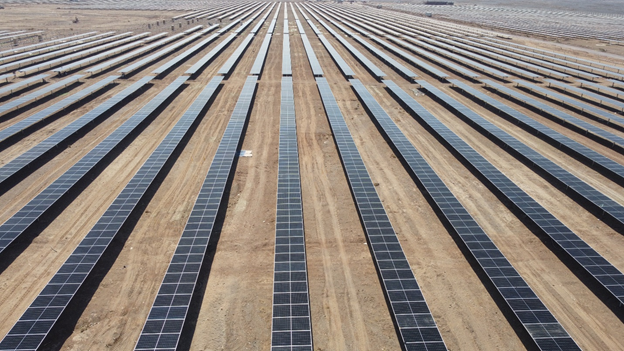The first phase of Iran’s largest photovoltaic solar power plant, Aftab-e-Sharq, with a capacity of 20 megawatts, was successfully synchronized with the national grid on October 21.
Developed by MAPNA Group specialists, the plant is located 45 kilometers from Isfahan and covers an expansive 1,200-hectare area.
According to project officials, this first phase of the solar power plant marks an important step toward cleaner energy production in Iran.
The operational phase alone is expected to save around 168,000 cubic meters of natural gas per hour, as well as prevent the release of approximately 335 tons of carbon dioxide per hour, making it a key project for environmental sustainability.
Aftab-e-Sharq is set to become the largest solar plant of its kind in the country upon completion, with a final planned capacity of 600 megawatts.
The project is being executed in seven phases, progressively increasing capacity to 600 megawatts across installments of 20, 40, 60, 120, and additional 120-megawatt phases.
The solar farm is being developed by a consortium led by MAPNA Group, including MAPNA Special Projects Construction & Development Company (MD-3) and MAPNA Renewable Energies Generation Company.
Mobarakeh Steel Company, an Isfahan-based industrial giant, is the project’s sponsor, having invested in renewable energy to support its own energy needs and reduce its environmental footprint.
At the initial contract signing for the plant on May 29, 2023, MAPNA Group’s then-president Abbas Aliabadi emphasized the significance of industrial and energy infrastructure advancements, especially renewable energy, for national development and environmental protection.
In addition to its environmental benefits, the power plant employs advanced solar technology, including spinning solar panels that adjust to capture maximum sunlight and bifacial solar cells that generate electricity from both sides when exposed to light.
The project scope includes comprehensive engineering services, equipment supply, installation, testing, commissioning, and operation of a 63-kilovolt substation within the plant’s grounds, as well as an additional 400-kilovolt substation and two 400-kilovolt transmission lines outside the plant’s boundary. For Mobarakeh Steel Company, this solar initiative aligns with its sustainability objectives. CEO Mohammad Yaser Tayebnia stated at the contract signing that the solar plant, together with the steel company’s 914-megawatt combined-cycle power plant previously built with MAPNA, aims to reduce the company’s reliance on the national grid. “After setting up these power plants, we will not only ease pressure on the national grid but also supply it with clean energy,” Tayebnia said, noting that both plants are projected to reduce annual CO2 emissions by 2.5 million tons.
